Summary of Mochizuki School That Was Founded by a Japanese Painter, Mochizuki Gyokusen (望月玉蟾)
In the Edo period, a great number of artists were active in the field of painting other than Kanō school and Tosa school. Among them, quite a few painters had their disciples to be active in the field by developing their clans to schools. Although Maruyama school and Shijō school were the famous ones, there were a lot of schools such as Kishi school, Hara school and Mori school besides.
One of them was the painting school called Mochizuki school. The school was a clan founded by Mochizuki Gyokusen (望月玉蟾) and active as the central faction in the Kyoto art world. It was engaged in the painting works of the Kyoto Imperial Palace, too. After that, the school was succeeded from generation to generation and active until the Shōwa era. However, its name and existence have not been known well until today. One of the reasons may be caused by the complexity or difficulty of the principals’ names probably. Frankly speaking, they are too difficult to be understood well. Basically, the principals of the school were succeeded from the parents to their children. However, the all names from the first to the fourth are read as “mochizukigyokusen”. Although they must be different in writing into Kanji letters (Chinese character), it should confuse everyone to see them. In addition, the second used the same signature and seal, and succeeded the same painting style that the first devised, which makes us hard to distinguish between them even today. I guess, so many people among you may be in difficult position to understand the Mochizuki school due to those difficulties or complexities. So this time, I am trying to summarize the school as follows.
Contents
- 1 The First Generation, Mochizuki Gyokusen (望月玉蟾)
- 2 The Second Generation, Mochizuki Gyokusen (望月玉仙)
- 3 The Third Generation, Mochizuki Gyokusen (望月玉川)
- 4 The Fourth Generation, Mochizuki Gyokusen (望月玉泉)
- 5 The Fifth Generation, Mochizuki Gyokukei
- 6 The Sixth Generation, Mochizuki Gyokusei
- 7 The Seventh Generation, Mochizuki Gyokusen (望月玉船)
- 8 The Eighth Generation, Mochizuki Gyokusen (八代目・望月玉蟾)
The First Generation, Mochizuki Gyokusen (望月玉蟾)
Mochizuki Gyokusen (望月玉蟾) (1692-1755) was a Japanese painter and active in the middle Edo period as well as the founder of Mochizuki school. He studied the painting under Tosa Mitsunari and Yamaguchi Sekkei. Ōnishi Suigetsu was a disciple under him. Although his first main business was drawing gold or silver lacquers on seal cases, he established his own painting style along consequences of studying Tosa school, Nanga (one of Japanese painting style) and Kanō school. He was good at paintings of landscapes, flowers and birds, and portraits. It is said that he went up to the court during 1744 to 1748 to produce pictures on the room partitions.
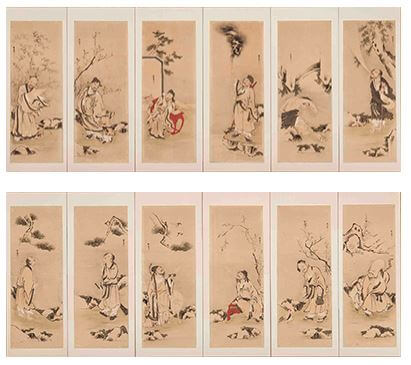
The Second Generation, Mochizuki Gyokusen (望月玉仙)
Mochizuki Gyokusen (望月玉仙) (1744-1795) was a Japanese painter and active in the middle Edo period as well as the second generation principal of Mochizuki school and a son of the first generation principal, Mochizuki Gyokusen (望月玉蟾). He had the high expressing capability in a wide range of areas from sumi ink painting to richly colored painting. He succeeded the same “Gyokusen” for his signature and seal that the first generation devised so that lots of the works are still difficult to be distinguished whether by the first generation or the second generation even today, which we must look for the further research to be worked out.
The Third Generation, Mochizuki Gyokusen (望月玉川)
Mochizuki Gyokusen (望月玉川) (1794 -1852) was a Japanese painter and active in the late Edo period as well as the third generation principal of Mochizuki school and a son of the second generation principal, Mochizuki Gyokusen (望月玉仙). He studied the painting techniques under Murakami Tōshu and Saeki Ganku because he lost his father, Gyokusen (玉川) at the age of two. He participated in the production works of pictures on the room partitions in the Ninomaru Palace of Kanazawa Castle also as a disciple of Ganku in 1809. He left for Edo and studied under Tani Bunchō after spending some times in Nagasaki. Gyokusen loved the painting style of Matsumura Goshun who belonged to Shijō school same as him so that he changed his painting style drastically to feed the school richly as the third generation principal of Mochizuki school. Consequently, he became good at landscape paintings and paintings of flowers & birds that look emotional as result of assimilating the paintings styles of Kishi school and Shijō school, and his name was left afterward.
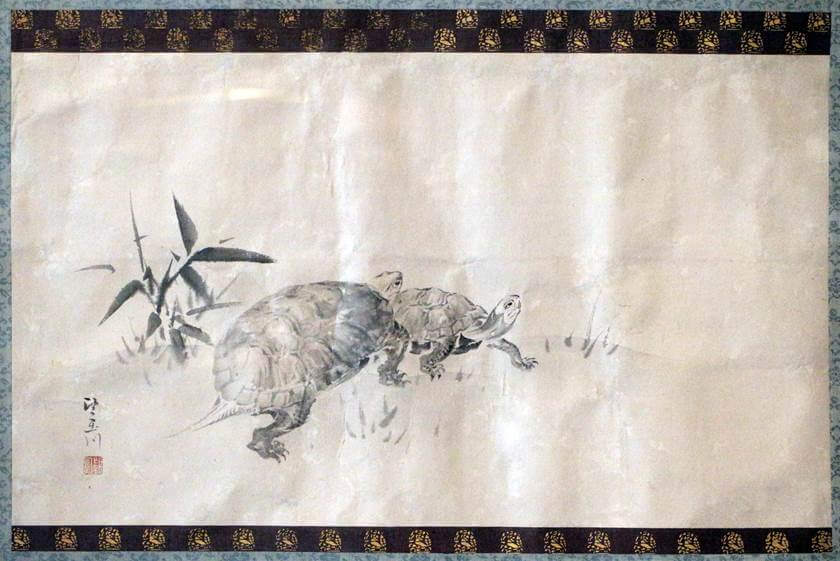
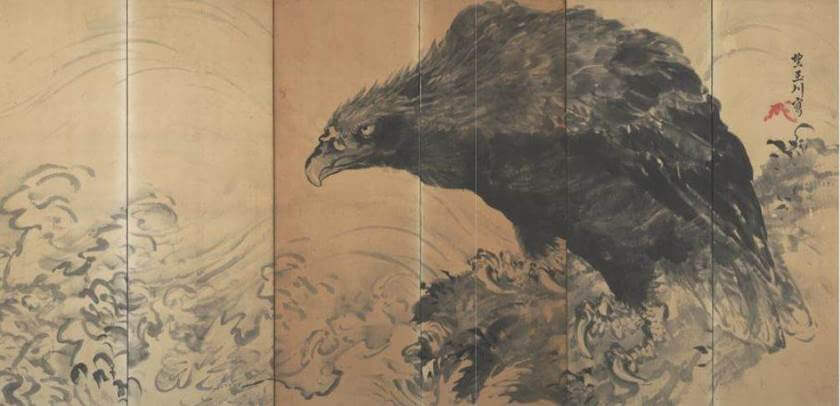
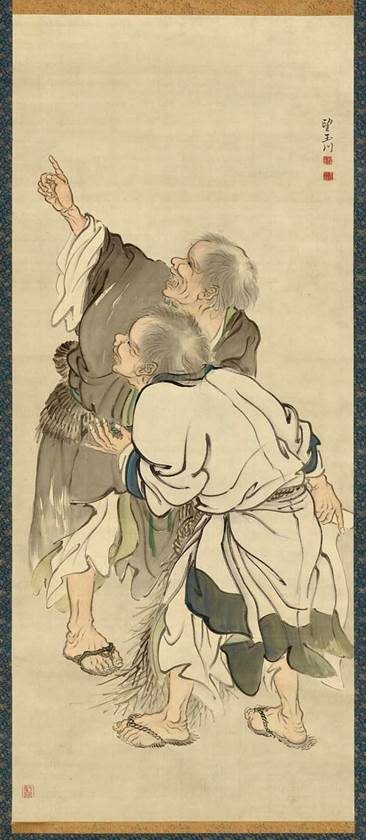
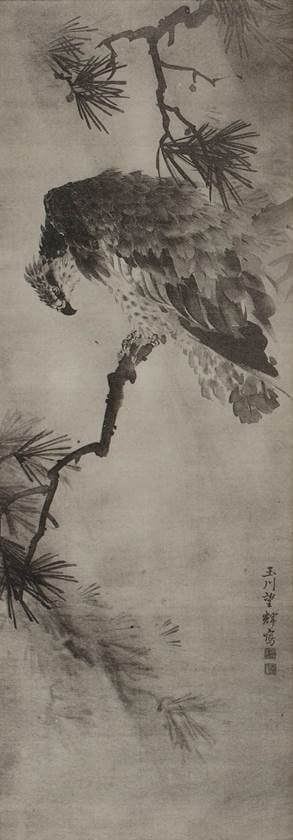
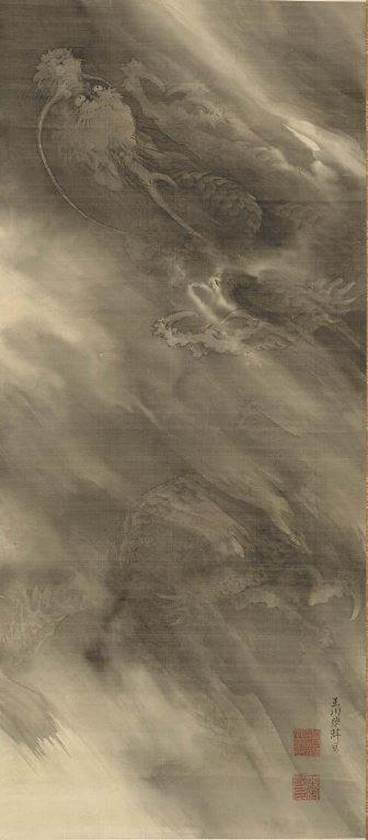
The Fourth Generation, Mochizuki Gyokusen (望月玉泉)
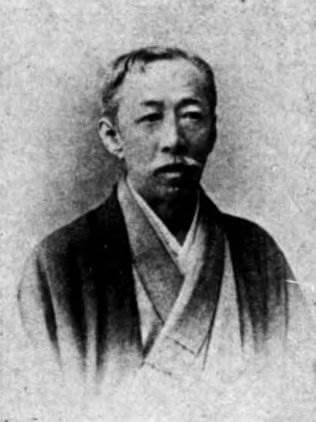
Mochizuki Gyokusen (望月玉泉) (1834-1913) was a Japanese painter and active from the Meiji to Taishō eras of Japan as well as the fourth generation principal of Mochizuki school. He studied the painting technique under his father, Mochizuki Gyokusen (望月玉川). In 1845, while serving to Kikutei family at the age of 13, he roamed around outside provinces including Ise Province and Suruga Province. While he had a great regard for sketching, he assimilated the painting styles of Maruyama school and Shijō school so that he became well-known with his paintings of landscapes and flowers & birds in the Kyoto painting world. In 1852 he succeeded the principal position of the school at the age of 18. The Mochizuki family was serving to the Imperial Palace from generation to generation. For example, it drew fusuma-e (images drawn or painted on fusuma door) when the Kyoto Imperial Palace was built newly in 1855, and then devoted the works such as folding screens at the occasion of the enthronement of the Emperor Meiji. He exhibited “Fugakuzu (Figure of Mt. Fuji)” and awarded the Bronze prize with the piece of work at Paris Exposition in 1889. And, he received the honor of the purchase by Ministry of Agriculture and Commerce at World’s Columbian Exposition in 1893. He was active in national industrial exhibitions in japan as well. In addition, he established Kyoto Prefectural School of Painting with Kōno Bairei to contribute to foster the younger generations. In 1904, he was appointed to be an Imperial Household Artist. He dedicated his life in his last years to focus on painting of flowers & birds. Kawai Gyokudō was a disciple studied under him and Mochizuki Gyokukei (望月玉渓) was a son of him.
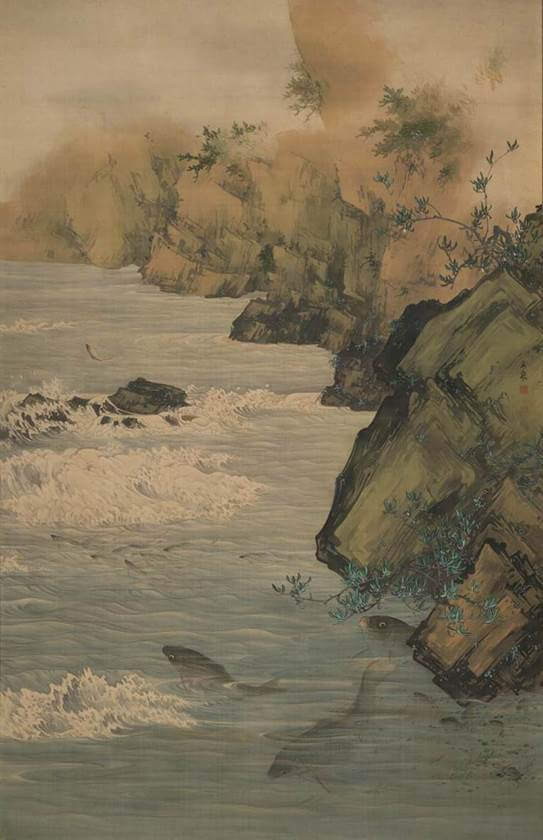
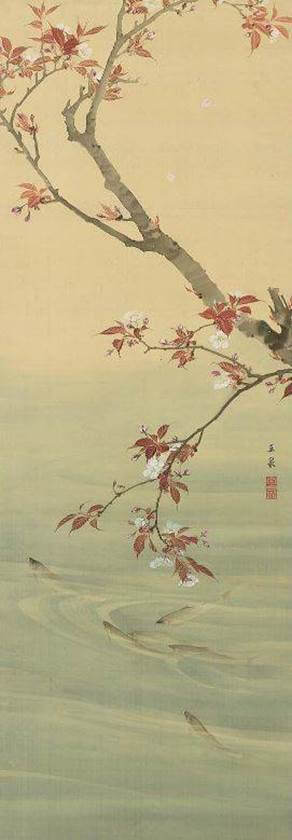
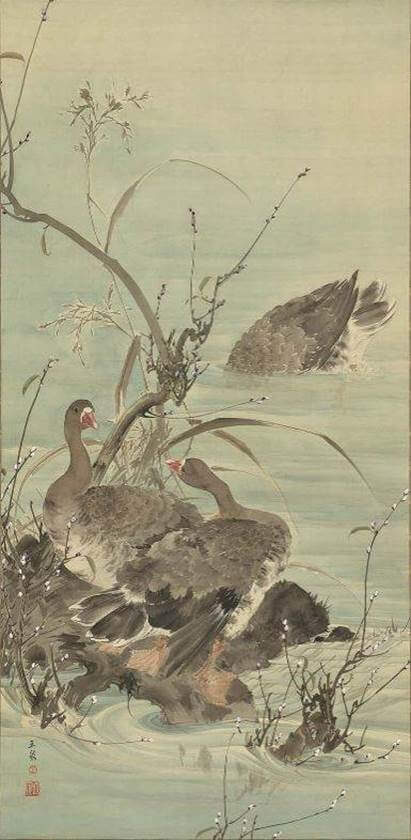
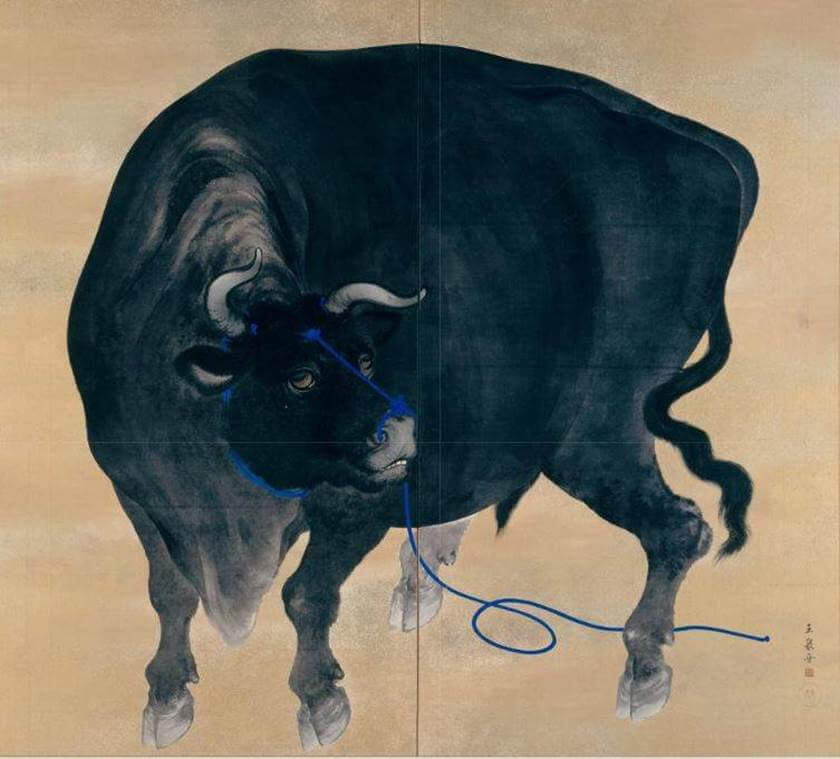
The Fifth Generation, Mochizuki Gyokukei
Mochizuki Gyokukei (1874–1938) was a Japanese painter and active in Kyoto from the Meiji, Taishō to early Shōwa eras of Japan as well as the fifth generation principal of Mochizuki school and a son of the fourth generation principal of the school, Mochizuki Gyokusen (望月玉泉). He studied the painting technique under his father. He brought nobly featured pieces of the works into the world assimilating the paintings styles of Kishi school and Shijō school, which brought about the established reputation to him. He awarded the 2nd class medal at the First Kaiga Kyōshinkai Exhibition in 1896. Mochizuki Gyokusei was a son of him and Kawai Gyokudō was one of the fellow disciples.
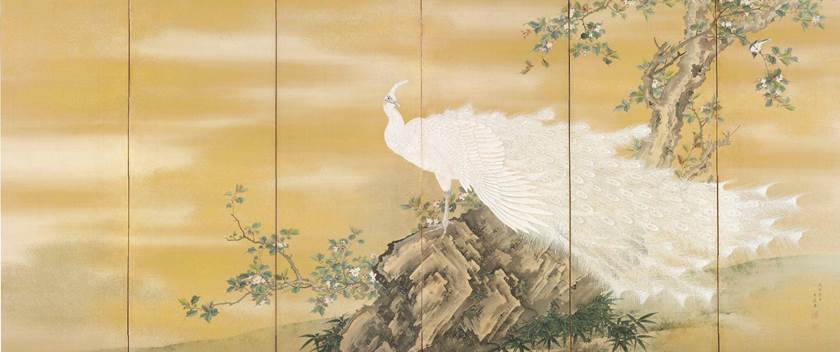
The Sixth Generation, Mochizuki Gyokusei
Mochizuki Gyokusei (1900–1951) was a Japanese painter born in Kyoto and a son of Mochizuki Gyokukei as well as the sixth generation principal of Mochizuki school. He studied the painting technique under his father. After he graduated the Kyoto City School of Arts and The Crafts and Kyoto City Specialist School of Painting, he studied under Nishiyama Suishō. Later, he became a professor of his old school. Many works that he put out express the looks of the four seasons with rich poetic imagination inheriting the traditional tint colored realistic paining technique for flowers and birds so that he was active on the Teiten Exhibition and the the Nihon Bijutsu Kyōkai-ten Exhibition.

Although the Mochizuki school as we generally know might end up until the sixth Gyokusei, it is succeeded until today afterward actually, which few people know that. As result of the investigation, it has been succeeded to the seventh generation and eighth generation continuously until today. Furthermore, it should be surprising that the eighth generation was inaugurated recently since 2017. Here are some accounts for the seventh generation and eighth generation as below.
The Seventh Generation, Mochizuki Gyokusen (望月玉船)
Mochizuki Gyokusen (望月玉船) (1943-) was born in Kyoto and he is the seventh generation of Mochizuki school. He is active as a lacquer artist both domestically and internationally. He received the Kyoto Prefecture Culture Prize and Distinguished Services Prize in 2012. Now he is at the position of a professor emeritus at Kyoto City University of Arts as well.
The Eighth Generation, Mochizuki Gyokusen (八代目・望月玉蟾)
The eighth generation of Mochizuki school, named Mochizuki Gyokusen (八代目・望月玉蟾) (1977-). He was born in Kyoto and a descendant of the first generation, Mochizuki Gyokusen (望月玉蟾). He studied under Mochizuki Gyokusen (望月玉船) who is active as a lacquer artist and active as a product designer. He is working at Kyoto Seika University and acting as Representative Director of Primary Style Co., Ltd. as well.
Unfortunately, the 7th and 8th generations do not look working as painters though, they have distinguished their talents in the art field after all and are active in various fields.






